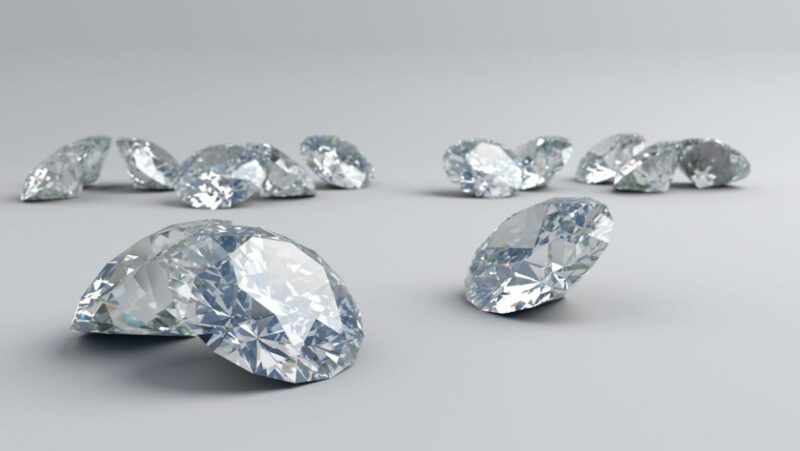
Technology is evolving by leaps and bounds, creating memorable experiences for the human race. This evolution results from the collective efforts of technology developers, who constantly push the frontier of science to discover new and innovative ways of delivering a better customer experience.
Diamonds are the most rigid natural material on Earth. A diamond is a particular type of mineral. It’s formed when carbon atoms get together exceptionally under high pressure. They are naturally formed in the Earth’s mantle and are brought to the surface by volcanoes. Here are some of the leading technologies in the industry for creating diamonds.
Technologies in the Diamond
Creating a diamond can be fun, especially with the right tools. Diamonds have only been around since the 4th century. However, we know they can make a long-lasting impression on anyone who sees one. For example, diamonds are often the center of engagement rings or anniversary gifts. Depending on the occasion and the recipient’s personality, you can find the perfect stone to fit their needs.
Highly advanced and modernised technology is being used to produce diamonds. In this modern era, the technology used in producing diamonds is high-speed and effective. In addition, the advent of technology has made the whole process of manufacturing diamonds more simple and more effective.
The technology has also made the production of synthetic diamonds more accurate, simple, and quick. In addition, computer-aided machines and cutting-edge technology have also made the production process faster.
Let’s check out the top technologies used for the creation of diamonds.
1. Synthetic Process
Synthetic diamonds are created in a lab. The loose lab created diamonds typically have the same physical makeup as mined diamonds. Diamond form when carbon atoms heat up to high temperatures. In modern synthetic diamond manufacturing, carbon atoms are heated to high temperatures in a process called “thermal growth.”
At these temperatures, the carbon atoms form a “diamond seed” – a small, imperfect diamond crystal. The seed is put in a growth chamber where the temperature and pressure increase. The carbon atoms continue to bond, and the diamond seed grows until it becomes a large crystal. The crystal is cut into smaller pieces and polished to remove defects.
The main difference is that they are created in a lab to have better clarity, color, and cut. The diamonds are man-made, and, in most cases, they are physically identical to mined diamonds. It is further divided into two categories HPHT and CVD. Let’s check out the working of each type.
High-Pressure High Temperature (HPHT)
The high-pressure, high-temperature (HPHT) process is the most common method used to synthesize diamonds. First, a small amount of carbon, usually less than ten ppm, is added to a small graphite crucible. Then, it is placed in a diamond anvil cell in a high-pressure, high-temperature device that consists of a diamond-anvil cell, a furnace, and a hydraulic press that squeezes the graphite in the crucible at high pressure. Next, the graphite is heated to approximately 1,500 °C on a stove.
Next, intense pressure from the hydraulic press forces the carbon atoms to rearrange into a diamond lattice structure. Finally, the graphite is quenched in water or a hot solvent to stop the reaction and let it cool. Then, the diamond product is released from the cell.
Chemical Vapor Deposition (CVD)
Chemical vapor deposition (CVD) is a process used to create high-quality diamonds. The process takes place in a vacuum chamber with a carbon-containing gas that deposits a diamond film onto a substrate.
The process starts by using an electric current to heat the graphite (carbon) target. It causes gaseous carbon to evaporate. As the gas rises away from the heat, it cools and condenses. At this point, the gas is rained down onto the substrate and forms a thin film of the diamond.
The combination of the gases and the vacuum chamber causes the atoms of diamond to gather on the surface of the raw stone, causing it to lose its luster. Over time, this happens more and more, causing the diamond to become harder and have a color.
1. Anvil Press
Anvil press technology is the new science to make diamonds in an easy process. In this technology, the diamond pieces compress by the two anvils specially designed for this purpose.
Anvils are heavy, flat-surfaced blocks placed on opposite sides of an object. This technique is called “pile-driving,” in which an anvil is used to create pressure on an object to compress it further.
It can be used when creating diamonds from graphite, a type of carbon. Pressure is applied to the graphite by using the diamonds around it. This technology does not need cogging, grinding, lapping, or polishing the diamond pieces.
There is no need for a high temperature in making the diamonds. The speed of making the diamonds is much more than the technology of a hollow press. There is no need to use hydraulic power.
2. Explosions
You can create diamonds using explosives. The key to this process is the speed of the detonation. If the explosion happens too slowly, the carbon atoms will break into fragments, not forming a gem. The quickest way to create diamonds is to use a shaped explosive charge that concentrates the force of the detonation into a narrower area.
It allows carbon atoms to be rearranged more effectively at speeds that exceed the speed of sound in that material, which is the minimum speed necessary for forming diamonds.
3. 3D Printing Technology
The diamond industry has been very slow to move into modern times, but the 3D printing revolution is changing that. The older methods of creating a diamond were complex, took too long, and were not very precise. This new process takes about a week, is precise down to the micrometer, and can be done anywhere in the world.
The scientist developed a method of using Carbon-60 molecules to create a diamond-like material. The technology works by progressively building up layers of fabric until the complete object is created. Now, you can use this material and create a diamond.
Final Thoughts
Diamonds have been coveted for their shine, hardness, and beautiful composition. It is assumed that carbon was forced into a diamond-like structure billions of years ago under high pressures and temperatures. This process is called crystallization, the same method used to synthesize diamonds in laboratories today.
However, not everyone can afford the cost of a diamond. It is no longer true with the creation of highly advanced diamond technology. Different technologies are used for diamond creation.
These new technologies mentioned above like 3D printing, HPHT, CVD, etc are the new future of the diamond industry, these technologies are paving an ethical and cost-friendly path.












